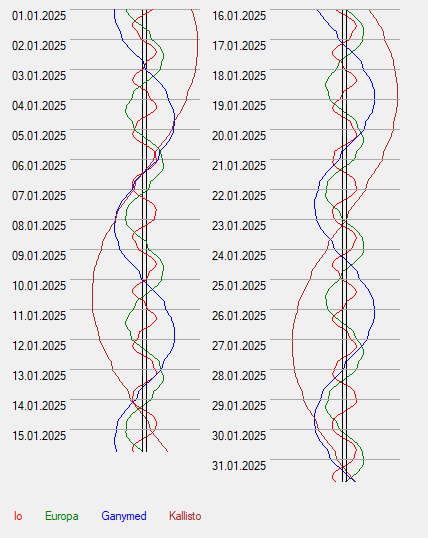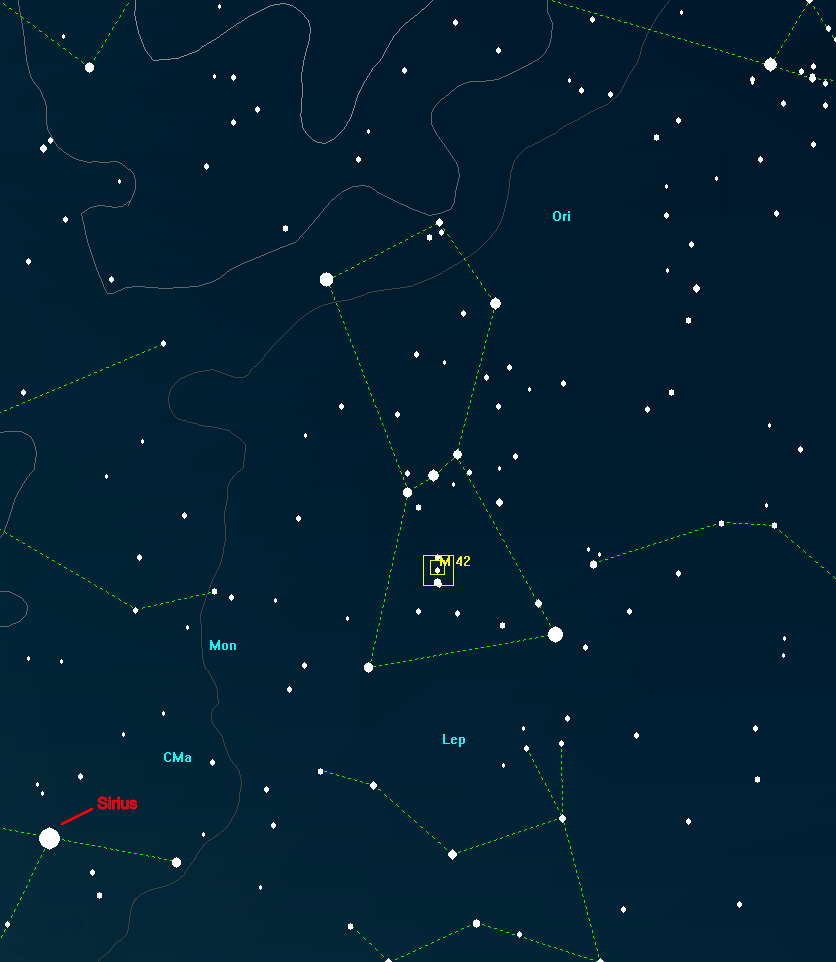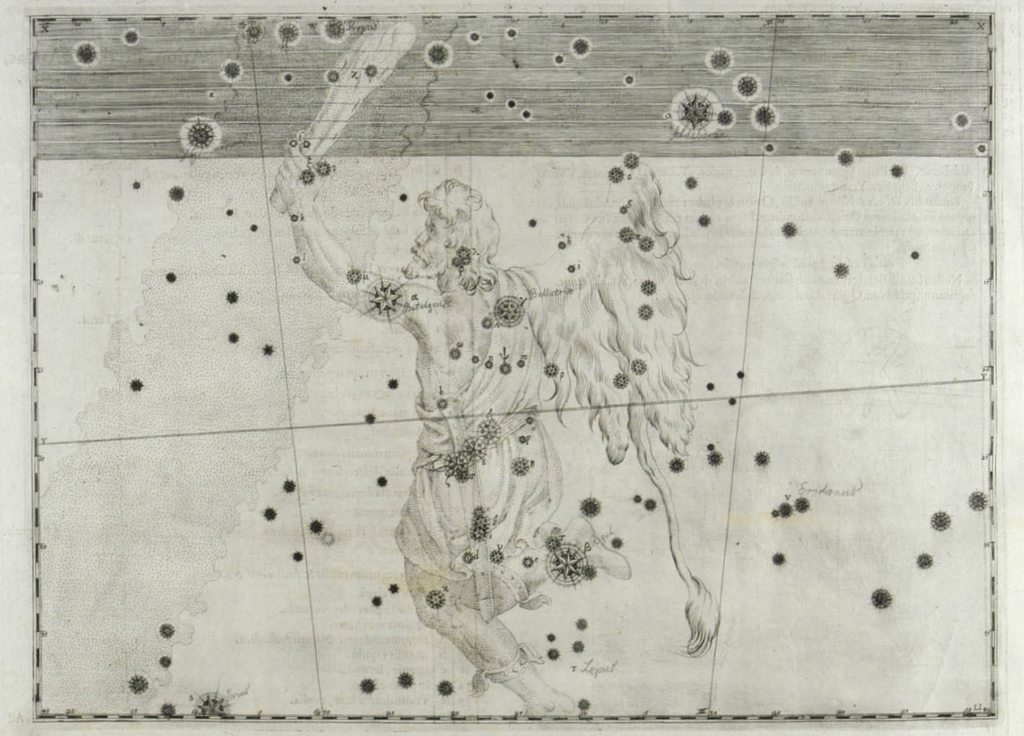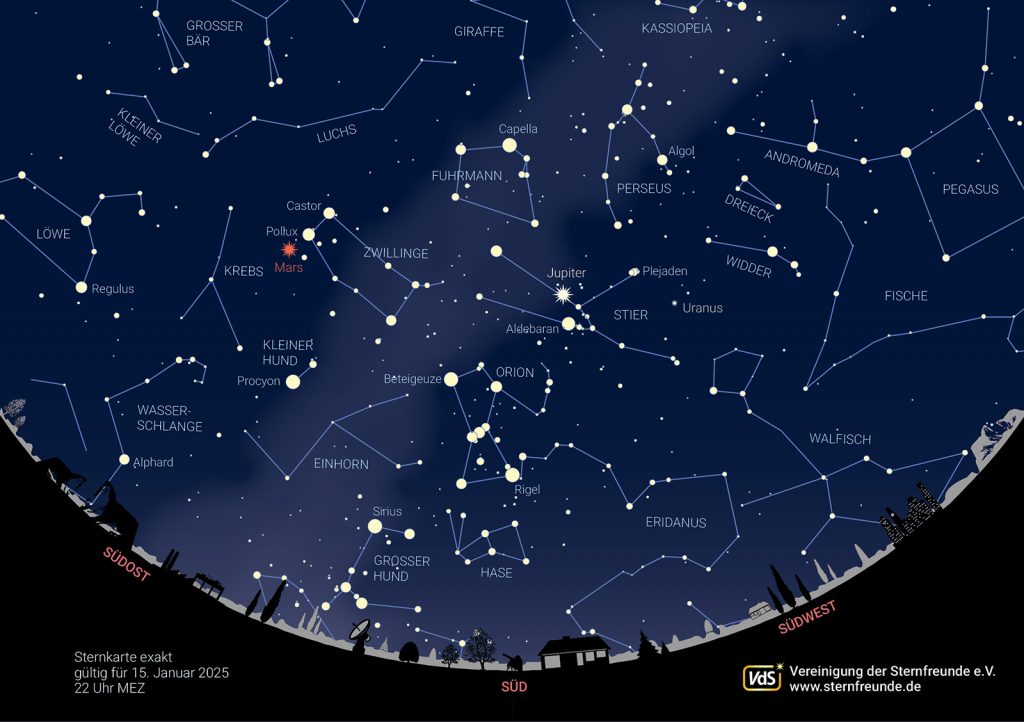The starry sky in January 2025
Best viewing conditions for Jupiter and Mars, Venus as a bright object in the evening sky, Saturn occulted by the moon.
Sun and moon
On 04.01. at 14:00, the earth is at perihelion (close to the sun). The distance between the earth and the sun at this time is 147.106 million kilometers. The sun continues to gain altitude at midday. Accordingly, the length of the day in Zweibrücken increases from 8 hours 24 minutes on the first of the month to 9 hours 30 minutes on the last of the month.
The full moon will affect the observation of fainter objects around the days of January 13.

Planets
Mercury offered good morning visibility at the end of December, but approaches the sun again in January, so it remains unobservable.
Opening in the western sky Venus the new year as a radiant evening star.
Reached on January 16 Mars its opposition. In this constellation, the Sun, Earth and Mars are almost in line. Seen from Earth, the reddish planet is opposite the sun and can therefore be observed all night long. It reaches a comparatively small distance of 96.289 million kilometers from our home planet.
Jupiter was in opposition to the Sun on the 7th of the previous month and is therefore still easy to observe. On 15.01. it is above the southern horizon at 21:30. On the right is the position of Jupiter's moons, which can already be seen with binoculars.
Saturn offers a special farewell performance in the evening sky after its opposition in September. On the evening of January 4, the moon will be occulted. The occultation begins in Zweibrücken at 18:29, and at 19:36 it emerges from behind the moon again. See also the article: Occultation of Saturn by the moon on 04.01.2025
Uranus and Neptune are no longer interesting objects of observation.
Starry sky
The winter starry sky is in its full splendor in the night sky towards the middle of the month. These include the constellations of Orion, Taurus with the reddish giant star Aldebaran, Auriga, Gemini and, to the southwest of Orion, the Great Dog near the horizon with the brightest star visible from Earth, Sirius. Despite its great brightness, the distance of 8.61 light years is more than twice as far as the actual nearest star, Proxima Centauri, which is 4.24 light years away. Proxima Centauri does not rise above the horizon in our latitudes and can only be observed with larger amateur telescopes.
On eastern horizon the front part of the lion can already be guessed. The inconspicuous crab can be seen slightly above.
About us are the constellations of the constellations Fuhrmann, Gemini and Perseus. Some star clusters can already be seen in Fuhrmann with binoculars.
High on the southern starry sky is the imposing constellation of Orion, which represents the great hunter of Greek mythology. Below the three belt stars, under better conditions you can already see other stars with the naked eye and a small nebula, which is the Orion Nebula, a place where new stars are formed. Here, too, you can take a look at this impressive nebula through binoculars.
On the left the position of the nebula in the constellation, on the right a drawing of Orion from the Uranometria by Johann Bayer from 1603.
In the West Pegasus and Andromeda continue to approach the haze layers near the horizon.
On northern sky the Great Bear continues to rise gradually over the eastern areas.
The following graphic shows the view of the sky on January 15 at 10 pm.




